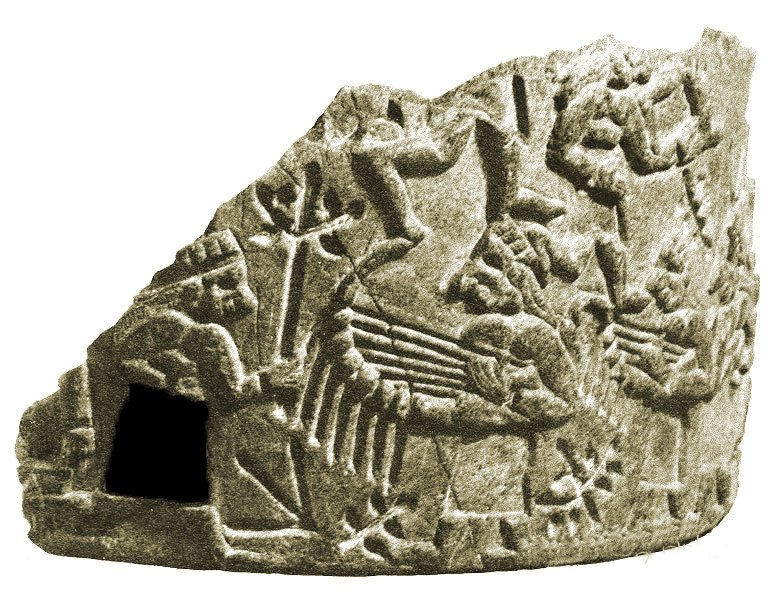Lugal-Anne-Mundu: ‘King Of The Universe’ And Powerful Leader Who Restored Sumer To Its Former Glory
A. Sutherland - AncientPages.com - Lugal-anne-mundu (Lugalannemundu) (ca. 25th century BC) was a powerful king and a great leader, who restored Sumer to its former glory.
His influence spread over a great number of territories from the Persian Gulf to the Mediterranean, neighboring the Taurus mountains in the north, and the Zagros mountains in the east.
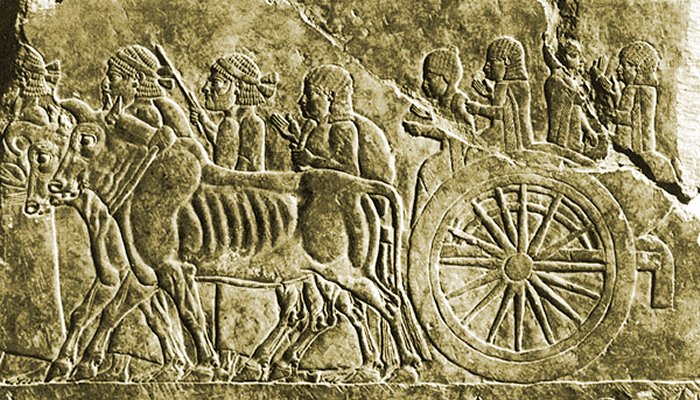
Excavations revealed the remains of buildings, walls, graves and a large number of inscribed clay, bronze and stone tablets, alabaster, onyx, porphyry and granite, vases in marble, some of which were inscribed, and others engraved and inlaid with ivory and precious stones.
According to the Sumerian King List, Lugal-anne-mundu ruled about 2400 BC and for the period of ninety years. He received the kingship following the fall of the Second Dynasty at Ur.
He was only one king ascribed to the Sumerian city-state Adab (modern Bismāyah) located south of Nippur, Iraq.
 Adab city was at the time, an important Sumerian center and at almost all other times in its history, ruled by kings who controlled all or most of Babylonia (southern Mesopotamia).
Adab city was at the time, an important Sumerian center and at almost all other times in its history, ruled by kings who controlled all or most of Babylonia (southern Mesopotamia).
The principal deity of the city was the goddess Ninhursag, known not only as the goddess of animal birth but the Mother of All Children, a mother-goddess figure.
There are few authentic contemporary inscriptions for Lugal-Anne-Mundu's reign; he is known mainly from a much later text, probably copied from one of his inscriptions, and unearthed during excavations 1903-04.
In this document, Lugal-anne-mundu - described as "King of the universe" or 'King of the four quarters of the Universe' - was an accomplished military leader and strategist.
He managed to capture vast territories and was able to make all foreign lands pay tribute to him and finally brought peace. Lugal-Anne-Mundu’s empire, which is believed to be the first in recorded history, collapsed upon his death.
A series of excavations conducted by the American archaeologist Edgar James Banks in 1903–04, exposed ancient ruins of Adab city dating from as early as the prehistoric period and as late as the reign of Ur-Nammu (reigned 2112–2095 BC).
The city of Adab was divided into two parts by a canal, on an island in which stood the temple, E-mach, with a ziggurat, or stepped tower. Archaeologists unearthed artifacts dated to Sargon of Akkad, ca. 2300 BC.
Further deep down, they found the remains of buildings, walls, graves and a large number of inscribed clay, bronze and stone tablets, alabaster, onyx, porphyry and granite, vases in marble, some of which were inscribed, and others engraved and inlaid with ivory and precious stones.
"...All were polished, some were engraved with a simple design; others were elaborately wrought with the figures of men and of animals... Others were inscribed with the name of the temple or of an unknown king...." wrote Edgar James Banks, who excavated the area of ancient Adab (now Bismaya or Bismya, Iraq).
Written by – A. Sutherland AncientPages.com Staff Writer
Copyright © AncientPages.com All rights reserved. This material may not be published, broadcast, rewritten or redistributed in whole or part without the express written permission of AncientPages.com
Expand for referencesOlmstead, A. T. "The Political Development of Early Babylonia." The American Journal of Semitic Languages and Literatures 33, no. 4 (1917): 283-321.
More From Ancient Pages
-
 Frigg: Chief Norse Goddess Who Knew Secrets Of Humans’ Fates
Featured Stories | Dec 13, 2022
Frigg: Chief Norse Goddess Who Knew Secrets Of Humans’ Fates
Featured Stories | Dec 13, 2022 -
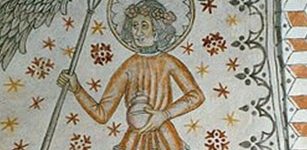 On This Day In History: Canute Lavard Was Murdered By His Cousin, Magnus I Of Sweden – On Jan 7, 1131
Historical Figures | Jan 7, 2017
On This Day In History: Canute Lavard Was Murdered By His Cousin, Magnus I Of Sweden – On Jan 7, 1131
Historical Figures | Jan 7, 2017 -
 Lost Viking Village Borgund And Its 45,000 Artifacts Hidden In A Basement Examined By Experts
Archaeology | Apr 22, 2022
Lost Viking Village Borgund And Its 45,000 Artifacts Hidden In A Basement Examined By Experts
Archaeology | Apr 22, 2022 -
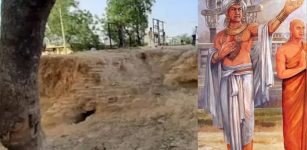 Discovered 2000-Year-Old Mauryan Structure May Lead To The Lost Ashoka Pillar Site
Archaeology | Sep 30, 2021
Discovered 2000-Year-Old Mauryan Structure May Lead To The Lost Ashoka Pillar Site
Archaeology | Sep 30, 2021 -
 Hawass Says Claims That The Ancient Egyptian Civilization Was Black Are Lies
Civilizations | Jun 21, 2024
Hawass Says Claims That The Ancient Egyptian Civilization Was Black Are Lies
Civilizations | Jun 21, 2024 -
 Modern Humans Did Not Enter Europe By Sea – New Study Says
Archaeology | Mar 7, 2022
Modern Humans Did Not Enter Europe By Sea – New Study Says
Archaeology | Mar 7, 2022 -
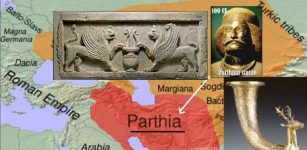 Next Discovery In Tepe Ashraf, Isfahan – Archaeologists May Have Stumbled Upon Ancient Necropolis
Archaeology | Aug 16, 2020
Next Discovery In Tepe Ashraf, Isfahan – Archaeologists May Have Stumbled Upon Ancient Necropolis
Archaeology | Aug 16, 2020 -
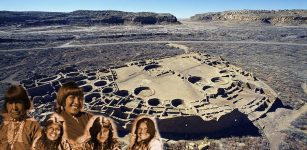 Ancient Chaco Was Organized Society Ruled By Women, Study Suggests
Archaeology | Mar 6, 2017
Ancient Chaco Was Organized Society Ruled By Women, Study Suggests
Archaeology | Mar 6, 2017 -
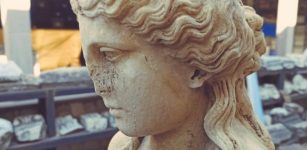 1,800-Year-Old Statue Of A Water Nymph Found Underground In The Ancient City Of Amastris
Archaeology | Sep 8, 2023
1,800-Year-Old Statue Of A Water Nymph Found Underground In The Ancient City Of Amastris
Archaeology | Sep 8, 2023 -
 On This Day In History: Captain James Cook Spotted The East Coast Of Australia – On Apr 19, 1770
News | Apr 19, 2016
On This Day In History: Captain James Cook Spotted The East Coast Of Australia – On Apr 19, 1770
News | Apr 19, 2016 -
 Anomalies Linked To L-Shaped Structure Detected At The Western Cemetery, Giza, Egypt
Archaeology | May 11, 2024
Anomalies Linked To L-Shaped Structure Detected At The Western Cemetery, Giza, Egypt
Archaeology | May 11, 2024 -
 Machu Picchu Was Built With The Royal Unit System – New Research Suggests
Archaeology | Jan 14, 2021
Machu Picchu Was Built With The Royal Unit System – New Research Suggests
Archaeology | Jan 14, 2021 -
 On This Day In History: ‘Devil’s Footprints’ Appeared In Devon, England – Feb 8/9, 1855
News | Feb 8, 2017
On This Day In History: ‘Devil’s Footprints’ Appeared In Devon, England – Feb 8/9, 1855
News | Feb 8, 2017 -
 Ancient DNA Reveals How European Skin, Eye, And Hair Color Evolved Over The Past 45,000 Years
DNA | Feb 24, 2025
Ancient DNA Reveals How European Skin, Eye, And Hair Color Evolved Over The Past 45,000 Years
DNA | Feb 24, 2025 -
 Modern Human DNA Contains Bits From All Over The Neanderthal Genome – Except The Y Chromosome. What Happened?
DNA | Jul 2, 2024
Modern Human DNA Contains Bits From All Over The Neanderthal Genome – Except The Y Chromosome. What Happened?
DNA | Jul 2, 2024 -
 15 New Archaeological Finds Unearthed In Pre-Inca Ruins Of Tiwanaku, Bolivia
Artifacts | Jan 27, 2021
15 New Archaeological Finds Unearthed In Pre-Inca Ruins Of Tiwanaku, Bolivia
Artifacts | Jan 27, 2021 -
 On This Day In History: The Only English Pope In History Of Catholic Church Elected – On Dec 4, 1154
News | Dec 4, 2016
On This Day In History: The Only English Pope In History Of Catholic Church Elected – On Dec 4, 1154
News | Dec 4, 2016 -
 Time Capsule – Best Preserved 3,000-Year-Old Dwelling Ever Found In Britain
Archaeology | Jan 12, 2016
Time Capsule – Best Preserved 3,000-Year-Old Dwelling Ever Found In Britain
Archaeology | Jan 12, 2016 -
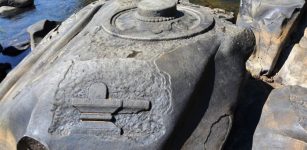 Mystery Of Ancient Carved Shiva Lingas In India And Cambodia
Featured Stories | Oct 12, 2015
Mystery Of Ancient Carved Shiva Lingas In India And Cambodia
Featured Stories | Oct 12, 2015 -
 Mysterious And Sacred Intihuatana Stone Of The Inca Was More Than Just An Astronomy Calendar
Archaeoastronomy | May 8, 2018
Mysterious And Sacred Intihuatana Stone Of The Inca Was More Than Just An Astronomy Calendar
Archaeoastronomy | May 8, 2018

